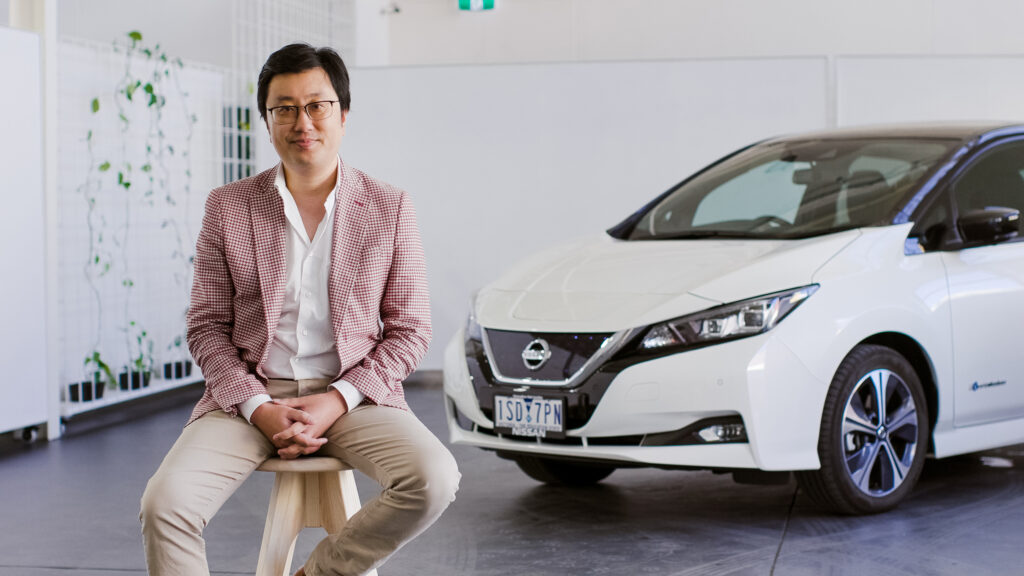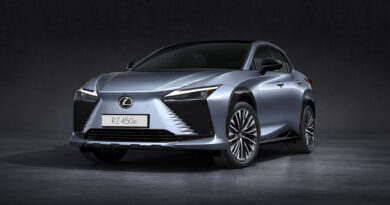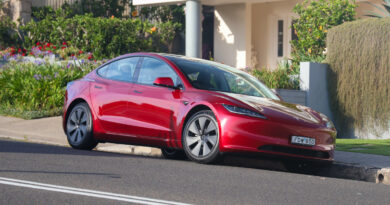$10,500 for 22kWh: Leaf e+ goes up against Tesla Powerwall
The Nissan Leaf e+ gets more range and more power than a garden variety Leaf – but its biggest drawcard could be the promise to power your house for days – or more.
Priced for $60,490 plus on-road costs, the e+ is $10,500 more than a regular Nissan Leaf, which continues unchanged from $49,990.
The biggest change on the Leaf e+ is a battery pack that’s jumped 22kWh, for a total capacity of 62kWh (usable capacity is 56kWh versus 36kWh for the regular Leaf).
READ MORE: First local drive of the Nissan Leaf e+ and our overseas review of the Leaf e+
So the e+ essentially charges $10,500 for 22kWh (or 20kWh) of battery capacity.

While that battery increases the claimed range from 270km to 385km, the founder of EV infrastructure supplier Jet Charge, Tim Washington, points to the e+’s potential to power your house as a sweetener to splash out more on the bigger battery.
After all, a Tesla Powerwall starts at $13,300 plus installation for a 13.5kWh single unit. Larger homes would need two ($24,900), three ($36,500) or more Powerwalls.
“I think it will take a big market away from stationary storage, just because logically I don’t see why you would need it [home battery storage],” says Washington, who points out that by stepping up from the Leaf to the Leaf e+ you can effectively add home storage capacity for a fraction of the price.

“Why would you have a home battery when you can have literally five times as much capacity?”
The Leaf and Leaf e+ aren’t quite plug-and-play for bi-directional charging. There’s charging hardware that needs to be attached to the house to allow the flow of electrons both ways.
One of the first such boxes available, the Wallbox Quasar, is expected to cost about $8000, although prices are expected to come down.
Washington says the hardware and appropriate regulatory approval will be available by the end of 2021 (some thought it would be ready last year).
And the big player Washington believes could be impacted? Tesla.
“Tesla’s pretty strong [in home storage],” says Washington, suggesting that could be why Tesla doesn’t play in the emerging vehicle-to-grid market that is currently limited to the Mitsubishi Outlander PHEV and Nissan Leaf – but the interest in V2G is expected to grow.
“It probably also tells you why Tesla’s not saying anything about bi-directional charging,” says Washington.
“[Tesla] make a lot of money selling stationary storage … they also have an electric car. They get asked all the time – ‘why don’t you just do bi-directional [charging] with the car?’.
“You don’t get a committed answer [out of Tesla].”
We would ask Tesla for a comment, but they no longer make comments, except through the Twitter feed of boss Elon Musk.

Nissan Australia boss Stephen Lester sees big fleet potential in the Leaf e+, too, one reason he believes 40 percent of buyers may step up to the larger battery.
“The initial applications will be early adopters … we also see a lot of the B2B opportunities around it,” says Lester.
“We can be collecting [electricity] through a solar array energy and then recharging employees’ vehicles or using the energy of employees’ vehicles to run the office,” he says of Nissan’s head office in south-eastern Melbourne.
“On scale that is applicable to any business that you’re going to have cars in.”
Nissan has been involved in a 51-car trial of V2G technology in Canberra. Other trials of V2G tech are also taking place, including one by Origin Energy.
And in Japan Nissan has been trialing a system that allows drivers to sell electricity to the grid in exchange for parking credits or coffee at a café.




